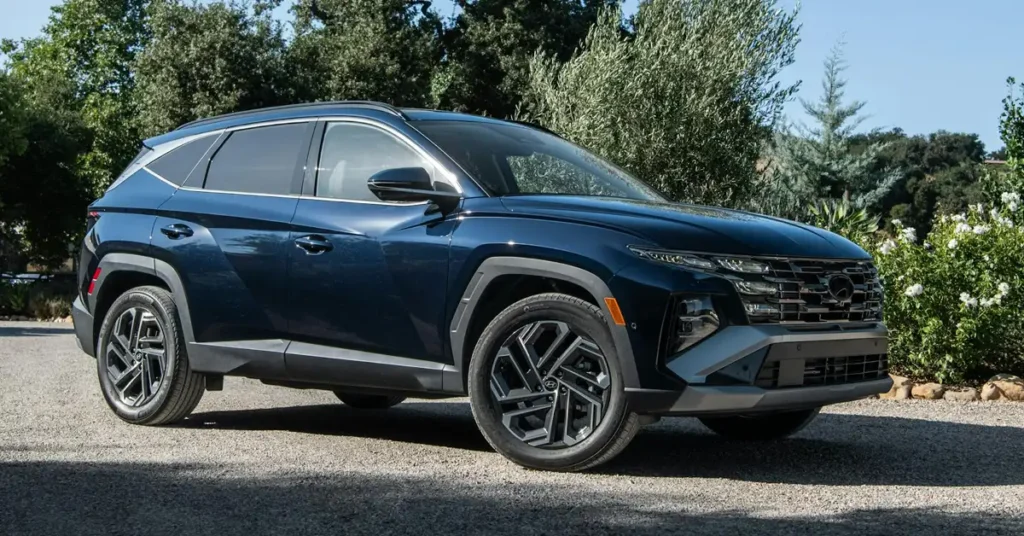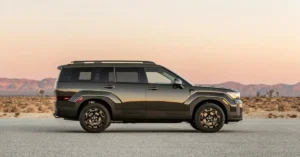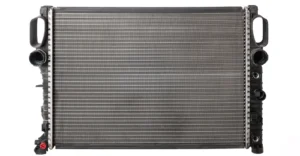The Hyundai Tucson has always looked the part bold, futuristic, and unmistakably confident on the road. With its crisp lines, wide stance, and feature-rich cabin, it’s easy to see why this compact SUV has become one of Hyundai’s global success stories. But here’s the real question: does the Tucson live up to its promise of long-term reliability once the kilometres start to rack up?
We’ve gone beyond the brochure claims to dig into what real owners, workshops, and industry reviewers have said. From gearbox quirks to air-conditioning hiccups, here’s the truth about the Hyundai Tucson’s reliability and what you should know before buying or maintaining one.
Why the Hyundai Tucson Keeps Grabbing Attention
The Tucson didn’t just appear out of nowhere. Since its debut in 2004, it has helped Hyundai secure a major foothold in the SUV market and every generation has brought more refinement.
It’s a car that ticks a lot of boxes. It looks sharp, drives smoothly, and comes packed with the latest driver-assistance technology. Inside, the quality has improved dramatically, with premium touches like soft-touch materials, ambient lighting, and digital displays that wouldn’t look out of place in a luxury car.
The Tucson also comes with a diverse range of powertrains petrol, diesel, hybrid, and plug-in hybrid giving buyers flexibility depending on their needs. And Hyundai’s five-year unlimited-kilometre warranty adds a solid layer of confidence.
Still, no SUV is completely trouble-free. Like many high-volume models, some Tucsons have shown their weak points over the years. Here’s a closer look at what tends to go wrong and how to keep yours running strong.
Transmission and Gearbox Issues
Transmission complaints are among the most commonly reported problems, particularly in early dual-clutch models. Owners have described rough or delayed shifting that makes the driving experience jerky, especially in stop-start traffic.
This behaviour is often traced back to the transmission control software rather than a purely mechanical fault. Hyundai dealerships have addressed many of these issues through software updates or recalibrations.
If your Tucson feels hesitant or clunky when changing gears, don’t ignore it. A simple visit to the service centre for a software update or transmission fluid replacement can restore smoother shifting. Leave it too long, and you risk increased wear or potential gearbox failure.
Engine Knocking and Failure
Perhaps the most serious issue linked to certain Tucson models involves the engine itself. Some high-mileage vehicles, particularly older ones, have experienced a knocking or ticking noise caused by a faulty connecting rod bearing.
Hyundai acknowledged this problem and issued recalls covering nearly 100,000 units. Affected cars received a Knock Sensor Detection System (KSDS) technology that warns the driver if the engine starts to knock, allowing time to shut down before severe damage occurs.
Preventing such issues is mostly about good maintenance. Stick religiously to oil change intervals and always use manufacturer-approved oil. If you ever hear metallic knocking under the bonnet, switch off the engine and have it inspected immediately. Ignoring early warning signs can lead to full engine seizure, which is far costlier than preventive maintenance.
Electrical and Infotainment Glitches
Modern cars rely heavily on software, and that can occasionally cause unexpected hiccups. Tucson owners have reported intermittent issues like the speakers cutting out, infotainment screens freezing, or door locks refusing to cooperate.
Most of these quirks turn out to be software-related. A quick hard reset disconnecting the battery’s negative terminal for a few minutes often brings things back to normal. If not, Hyundai service centres can apply software patches or replace faulty lock actuators.
Newer Tucson generations have seen far fewer complaints, thanks to improved infotainment systems and better electronic component quality.
Air Conditioning Problems
For drivers in hot climates, the air conditioning system is crucial and some Tucson models have had trouble keeping their cool. Owners have reported weak airflow, uneven cooling, or complete AC failure.
The cause can range from a simple refrigerant leak to a failing compressor or an electrical issue in the control circuit. Early detection is key. If you notice the air turning warm or hear a faint hissing sound, have the system inspected for leaks. In many cases, a refrigerant top-up or condenser cleaning is all that’s needed.
In dusty or high-temperature environments, such as the UAE, it’s smart to have the AC system serviced annually to keep performance consistent.
Safety System Errors
Hyundai’s Forward Collision-Avoidance System (FCAS) is designed to help prevent crashes by warning the driver or automatically applying the brakes. However, a few Tucson owners have experienced false alarms or warning messages indicating system errors.
This can happen if the front radar sensor becomes misaligned or if the software needs recalibration. The fix is straightforward a dealership visit for sensor adjustment or a firmware update typically resolves the issue. Keeping the front sensors clean and unobstructed is another simple preventive measure that goes a long way.
Acceleration and Performance Lag
Some earlier Tucsons, particularly pre-2015 models, have been known to hesitate when accelerating from a standstill or overtaking. The issue can stem from clogged fuel injectors, throttle sensor problems, or transmission lag due to aged fluid.
A thorough service that includes fuel injector cleaning, throttle body inspection, and fluid replacement often restores performance. Hyundai recommends checking these components every 40,000 to 50,000 kilometres.
Newer models, especially hybrids, have largely eliminated this lag, offering smoother and more immediate acceleration.
Headlight Dimness and Flickering
A surprisingly common owner complaint is weak or flickering headlights. Water ingress due to worn seals and wiring corrosion tends to be the culprit rather than the bulbs themselves.
Upgrading to high-quality bulbs and replacing faulty seals can solve most problems. Always check for moisture build-up after washing or rain catching it early prevents further electrical damage.
The Best and Worst Years of the Hyundai Tucson
If you’re considering buying a used Tucson, choosing the right model year can make all the difference.
Best Years to Buy:
2018 to 2023 models are highly recommended. These versions feature refined drivetrains, improved reliability, and better tech integration. The 2020 to 2022 fourth-generation models, in particular, stand out for their safety scores and hybrid options.
Years to Approach with Caution:
Models built between 2011 and 2017 have a higher incidence of engine and electrical problems. The 2014 to 2016 units are particularly known for premature gearbox wear.
In short, if you’re shopping used, go for a post-2018 Tucson. The improvements in design, build quality, and mechanical reliability are substantial.
Recommended Preventive Maintenance for a Trouble-Free Tucson
Keeping a Tucson reliable isn’t difficult if you stay on top of regular servicing. Here’s what experts suggest:
- Change the engine oil and filter every 10,000 to 12,000 km.
- Replace the transmission fluid every 45,000 to 60,000 km.
- Flush coolant and brake fluid every two years.
- Inspect the engine and cabin air filters every 15,000 km.
- Schedule AC servicing annually, especially before summer.
- Ask for software updates during service visits to ensure all systems run optimally.
Following these simple steps can save you thousands in long-term repair costs and keep your Tucson performing like new.
Hyundai Tucson vs Rivals
How does the Tucson measure up against other compact SUVs in reliability and ownership experience?
| Model | Reliability Rating (out of 5) | Warranty | Common Issues | Strengths |
| Hyundai Tucson | 4.0 | 5-year/unlimited km | Gearbox, AC, electrical | Design, comfort, safety tech |
| Toyota RAV4 | 4.5 | 3-year/100,000 km | Minor electronics | Exceptional reliability, resale value |
| Honda CR-V | 4.3 | 3-year/100,000 km | Turbo oil dilution | Smooth drive, roomy cabin |
| Mazda CX-5 | 4.2 | 3-year/100,000 km | Suspension wear | Engaging handling, premium feel |
The Tucson stands out for its design, warranty, and comfort, but Toyota and Honda still hold a slight edge in bulletproof reliability. However, Hyundai has narrowed that gap considerably in the latest generation.
Frequently Asked Questions
Is the Hyundai Tucson reliable overall?
Yes. Most recent Tucsons are well-built and dependable. Older models had a few issues, but Hyundai’s ongoing updates have made newer versions among the most reliable SUVs in their class.
How long does the Tucson engine last?
With regular servicing and quality parts, it’s not uncommon for these engines to exceed 300,000 km without major trouble.
Are the hybrid Tucsons reliable?
So far, yes. Early feedback shows excellent reliability, though regular cooling system maintenance is crucial in hot climates.
Is maintenance expensive?
Not particularly. Hyundai’s parts are widely available, and service costs are generally lower than those of European rivals.
MotorHub Insight: Keep Your Hyundai Tucson Running Like New in the UAE
Driving in the UAE means dealing with intense heat, fine dust, and long highway stretches all of which can test your Tucson’s durability. At MotorHub, we specialise in keeping your Hyundai in peak condition with professional diagnostics, AC servicing, gearbox calibration, and preventive maintenance tailored to local conditions.
Whether you need a quick inspection or a complete system overhaul, our certified technicians use genuine parts and advanced diagnostic tools to ensure your Tucson performs flawlessly year after year.



